Outage and Throughput of WPCN-SWIPT Networks with Nonlinear EH Model in Nakagami-m Fading
Abstract
:1. Introduction
1.1. Background
1.2. Related Work
1.3. Motivation
1.4. Contributions
- A WPT-SWIPT protocol is presented including two phases: WPT phase and SWIPT phase. In the WPT phase, it can charge the power-free source node. In the SWIPT phase, the source node can transmit information and power to the terminal users simultaneously by using the harvested energy.
- The closed-form expressions of the system outage probability are derived. To make the result more concise, asymptotic expressions of the system outage probability are also presented in high-transmit power scenarios. Then, the expressions of the system reliable throughput are also provided. For comparison, the system performance with the linear EH model is also analyzed.
- Simulation results demonstrate the correctness of our derived analytical results and show that the systems under the LG nonlinear and linear EH models have very different performance behaviors. Using the LG nonlinear EH model can avoid false results of the system performance evaluation because the LG nonlinear EH model is closer to practice than the linear one.
2. System Model
2.1. Channel Model
2.2. Linear and Nonlinear EH Models
2.3. Transmission Protocol
2.3.1. EH at
2.3.2. ID at
2.3.3. EH at
3. Outage Probability and Throughput Analysis
3.1. General Outage Probability and Throughput Analysis
3.2. Asymptotic Outage Probability and Throughput Analysis
4. Simulation and Results
5. Conclusions
Author Contributions
Funding
Conflicts of Interest
Abbreviations
| WPCN | Wireless-powered communication network |
| SWIPT | Simultaneous wireless information and power transfer |
| LG | Logistic |
| EH | Energy-harvesting |
| PS | Power-splitting |
| WDs | Wireless devices |
| WSNs | Wireless sensor networks |
| IoT | Internet of Things |
| WPAN | Wireless personal area networks |
| RF | Radio-frequency |
| WIT | Wireless information transfer |
| WPT | Wireless power transfer |
| ID | Information decoding |
| TS | Time switching |
| AF | Amplify-and-forward |
| DF | Decode-and-forward |
| PW | Piecewise |
| FR | Fractional |
| S | Source |
| MPS | Multi-antenna power station |
| the k-th user | |
| FS | fog server |
| Probability density function | |
| CCDF | Complementary cumulative distribution function |
| MRT | Maximum rate transmission |
| MRC | Maximum ratio combining |
| SNR | Signal-to-noise ratio |
Appendix A. Proof of Proposition 1
Appendix B. Proof of Proposition 2
References
- Bassoli, M.; Bianchi, V.; Munari, I.D. A plug and play IoT wi-fi smart home system for human monitoring. Electronics 2018, 7, 200. [Google Scholar] [CrossRef]
- Urmonov, O.; Kim, H. An energy-efficient fail recovery routing in TDMA MAC protocol-based wireless sensor network. Electronics 2018, 7, 444. [Google Scholar] [CrossRef]
- Cao, J.; Bu, Z.; Gao, G.; Tao, H. Weighted modularity optimization for crisp and fuzzy community detection in large-scale networks. Phys. A Stat. Mech. Appl. 2016, 462, 386–395. [Google Scholar] [CrossRef]
- Liu, J.; Zha, L.; Cao, J.; Fei, S. Hybrid-driven-based stabilisation for networked control systems. IET Control Theory Appl. 2016, 10, 2279–2285. [Google Scholar] [CrossRef]
- Wang, L.; Hu, F.; Ling, Z.; Wang, B. Wireless information and power transfer to maximize information throughput in WBAN. IEEE Internet Things J. 2017, 4, 1663–1670. [Google Scholar] [CrossRef]
- Valenta, C.R.; Durgin, G.D. Harvesting wireless power: Survey of energy-harvester conversion efficiency in far-field, wireless power transfer systems. IEEE Microw. Mag. 2014, 15, 108–120. [Google Scholar]
- Xiong, K.; Fan, P.; Zhang, C.; Letaief, K.B. Wireless information and energy transfer for two-hop non-regenerative MIMO-OFDM relay networks. IEEE J. Sel. Areas Commun. 2015, 33, 1595–1611. [Google Scholar] [CrossRef]
- Xiong, K.; Chen, C.; Qu, G.; Fan, P.; Letaief, K.B. Group cooperation with optimal resource allocation in wireless powered communication networks. IEEE Trans. Wirel. Commun. 2017, 16, 3840–3853. [Google Scholar] [CrossRef]
- Lu, X.; Wang, P.; Niyato, D.; Kim, D.I.; Han, Z. Wireless networks with RF energy harvesting: A contemporary survey. IEEE Commun. Surveys Tuts. 2015, 17, 757–789. [Google Scholar] [CrossRef]
- Di, X.; Xiong, K.; Fan, P.; Yang, H. Simultaneous wireless information and power transfer in cooperative relay networks with rateless codes. IEEE Trans. Veh. Technol. 2017, 66, 2981–2996. [Google Scholar] [CrossRef]
- Ahmed, F.; Ahmed, T.; Muhammad, Y.; Moullec, Y.L.; Annus, P. Operating wireless sensor nodes without energy storage: Experimental results with transient computing. Electronics 2016, 5, 89. [Google Scholar] [CrossRef]
- Zeng, Y.; Clerckx, B.; Zhang, R. Communications and signals design for wireless power transmission. IEEE Trans. Wirel. Commun. 2017, 65, 2264–2290. [Google Scholar] [CrossRef]
- Almohaimeed, A.M.; Amaya, R.E.; Lima, J.A.; Yagoub, M.C.E. An adaptive power harvester with active load modulation for highly efficient short/long range RF WPT applications. Electronics 2018, 7, 125. [Google Scholar] [CrossRef]
- Zheng, H.; Xiong, K.; Fan, P.; Zhou, L.; Zhong, Z. SWIPT-aware fog information processing: Local computing vs. fog offloading. Sensors 2018, 18, 3291. [Google Scholar] [CrossRef]
- Lu, Y.; Xiong, K.; Fan, P.; Zhong, Z.; Letaief, K.B. Robust transmit beamforming with artificial redundant signals for secure SWIPT system under non-linear EH model. IEEE Trans. Wirel. Commun. 2018, 17, 2218–2232. [Google Scholar] [CrossRef]
- Ju, H.; Zhang, R. Throughput maximization in wireless powered communication networks. IEEE Trans. Wirel. Commun. 2014, 13, 418–428. [Google Scholar] [CrossRef]
- Zhang, R.; Ho, C.K. MIMO broadcasting for simultaneous wireless information and power transfer. IEEE Trans. Wirel. Commun. 2013, 12, 1989–2001. [Google Scholar] [CrossRef]
- Nasir, A.A.; Zhou, X.; Durrani, S.; Kennedy, R.A. Relaying protocols for wireless energy harvesting and information processing. IEEE Trans. Wirel. Commun. 2013, 12, 3622–3636. [Google Scholar] [CrossRef]
- Jiang, R.; Xiong, K.; Zhang, Y.; Zhong, Z. Outage analysis and optimization of SWIPT in network-coded two-way relay networks. Mob. Inf. Syst. 2017, 2017. [Google Scholar] [CrossRef]
- Mukherjee, A.; Acharya, T.; Khandaker, M.R.A. Outage analysis for SWIPT-enabled two-way cognitive cooperative communications. IEEE Trans. Veh. Technol. 2018, 67, 9032–9036. [Google Scholar] [CrossRef]
- Majid Butt, M.; Salama, A.; Mohamed, A.; Guizani, M. Relay selection schemes to minimise outage in wireless powered communication networks. IET Signal Process. 2016, 10, 203–209. [Google Scholar] [CrossRef]
- Moon, J.; Lee, H.; Song, C.; Lee, I. Secrecy performance optimization for wireless powered communication networks with an energy harvesting jammer. IEEE Trans. Wirel. Commun. 2017, 65, 764–774. [Google Scholar] [CrossRef]
- Boshkovska, E.; Ng, D.W.K.; Zlatanov, N.; Schober, R. Practical non-linear energy harvesting model and resource allocation for SWIPT systems. IEEE Commun. Lett. 2015, 19, 2082–2085. [Google Scholar] [CrossRef]
- Boshkovska, E.; Morsi, R.; Ng, D.W.K.; Schober, R. Power allocation and scheduling for SWIPT systems with nonlinear energy harvesting model. In Proceedings of the 2016 IEEE International Conference on Communications (ICC), Kuala Lumpur, Malaysia, 22–27 May 2016; pp. 1–6. [Google Scholar]
- Boshkovska, E.; Koelpin, A.; Ng, D.W.K.; Zlatanov, N.; Schober, R. Robust beamforming for SWIPT systems with nonlinear energy harvesting model. In Proceedings of the 2016 IEEE 17th International Workshop on Signal Processing Advances in Wireless Communications (SPAWC), Edinburgh, UK, 3–6 July 2016; pp. 1–5. [Google Scholar]
- Kang, J.; Kim, I.; Kim, D.I. Joint optimal mode switching and power adaptation for nonlinear energy harvesting SWIPT system over fading channel. IEEE Trans. Commun. 2018, 66, 1817–1832. [Google Scholar] [CrossRef]
- Xiong, K.; Wang, B.; Liu, K.J.R. Rate-energy region of SWIPT for MIMO broadcasting under nonlinear energy harvesting model. IEEE Trans. Wirel. Commun. 2017, 16, 5147–5161. [Google Scholar] [CrossRef]
- Jiang, R.; Xiong, K.; Fan, P.; Zhang, Y.; Zhong, Z. Optimal design of SWIPT systems with multiple heterogeneous users under non-linear energy harvesting model. IEEE Access 2017, 5, 11479–11489. [Google Scholar] [CrossRef]
- Lu, Y.; Xiong, K.; Fan, P.; Ding, Z.; Zhong, Z.; Letaief, K.B. Global energy efficiency in secure MISO SWIPT systems with non-linear power-splitting EH model. IEEE J. Sel. Areas Commun. 2019, 37, 216–232. [Google Scholar] [CrossRef]
- Boshkovska, E.; Ng, D.W.K.; Zlatanov, N.; Koelpin, A.; Schober, R. Robust resource allocation for MIMO wireless powered communication networks based on a non-linear EH model. IEEE Trans. Commun. 2017, 65, 1984–1999. [Google Scholar] [CrossRef]
- Venkategowda, N.K.D.; Lee, H.; Lee, I. Joint transceiver designs for MSE minimization in MIMO wireless powered sensor networks. IEEE Trans. Commun. 2018, 17, 5120–5131. [Google Scholar] [CrossRef]
- Yang, Z.; Xu, W.; Pan, Y.; Pan, C.; Chen, M. Energy efficient resource allocation in machine-to-machine communications with multiple access and energy harvesting for IoT. IEEE Internet Things J. 2018, 5, 229–245. [Google Scholar] [CrossRef]
- Huang, Y.; Li, Z.; Zhou, F.; Zhu, R. Robust AN-aided beamforming design for secure MISO cognitive radio based on a practical nonlinear EH model. IEEE Access 2017, 5, 14011–14019. [Google Scholar] [CrossRef]
- Liu, X.; Li, Z.; Wang, C. Secure decode-and-forward relay SWIPT systems with power splitting schemes. IEEE Trans. Veh. Technol. 2018, 67, 7341–7354. [Google Scholar] [CrossRef]
- Zhang, J.; Pan, G. Outage analysis of wireless-powered relaying MIMO systems with non-linear energy harvesters and imperfect CSI. IEEE Access 2016, 4, 7046–7053. [Google Scholar] [CrossRef]
- Wang, K.; Li, Y.; Ye, Y.; Zhang, H. Dynamic power splitting schemes for non-linear EH relaying networks: Perfect and imperfect CSI. In Proceedings of the 2017 IEEE 86th Vehicular Technology Conference (VTC-Fall), Toronto, ON, Canada, 24–27 September 2017; pp. 1–5. [Google Scholar]
- Zhang, J.; Pan, G.; Xie, Y. Secrecy analysis of wireless-powered multi-antenna relaying system with nonlinear energy harvesters and imperfect CSI. IEEE Trans. Green. Commun. Netw. 2018, 2, 460–470. [Google Scholar] [CrossRef]
- Nakagami, M. The m-distribution—A general formula of intensity distribution of rapid fading. In Statistical Methods in Radio Wave Propagation; Pergamon Press: New York, NY, USA, 1960; pp. 3–36. [Google Scholar]
- Dong, Y.; Hossain, M.J.; Cheng, J. Performance of wireless powered amplify and forward relaying over nakagami-m fading channels with nonlinear energy harvester. IEEE Commun. Lett. 2016, 20, 672–675. [Google Scholar] [CrossRef]
- Maleki, M.; Hoseini, A.M.D.; Masjedi, M. Performance analysis of SWIPT relay systems over Nakagami-m fading channels with non-linear energy harvester and hybrid protocol. In Proceedings of the Iranian Conference on Electrical Engineering (ICEE), Mashhad, Iran, 8–10 May 2018; pp. 610–615. [Google Scholar]
- Chen, Y.; Zhao, N.; Alouini, M. Wireless energy harvesting using signals from multiple fading channels. IEEE Trans. Commun. 2017, 65, 5027–5039. [Google Scholar] [CrossRef]
- Morsi, R.; Boshkovska, E.; Ramadan, E.; Ng, D.W.K.; Schober, R. On the performance of wireless powered communication with non-linear energy harvesting. In Proceedings of the 2017 IEEE 18th International Workshop on Signal Processing Advances in Wireless Communications (SPAWC), Sapporo, Japan, 3–6 July 2017; pp. 1–5. [Google Scholar]
- Chen, X.; Yuen, C.; Zhang, Z. Wireless energy and information transfer tradeoff for limited-feedback multiantenna systems with energy beamforming. IEEE Trans. Veh. Technol. 2014, 63, 407–412. [Google Scholar] [CrossRef]
- Gradshteyn, I.S.; Ryzhik, I.M. Table of Integrals, Series, and Products, 7th ed.; Elsevier: Amsterdam, The Netherlands, 2007. [Google Scholar]
- Wu, Z.; Cao, J.; Wang, Y.; Wang, Y.; Zhang, L.; Wu, J. hPSD: A hybrid PU-learning-based spammer detection model for product reviews. IEEE Trans. Cybern. 2018, in press. [Google Scholar] [CrossRef]
- Zhang, C.; Fan, P.Y.; Xiong, K. Optimal power allocation with delay constraint for signal transmission from moving train to base stations in high-speed railway scenarios. IEEE Trans. Veh. Technol. 2015, 64, 5775–5788. [Google Scholar] [CrossRef]
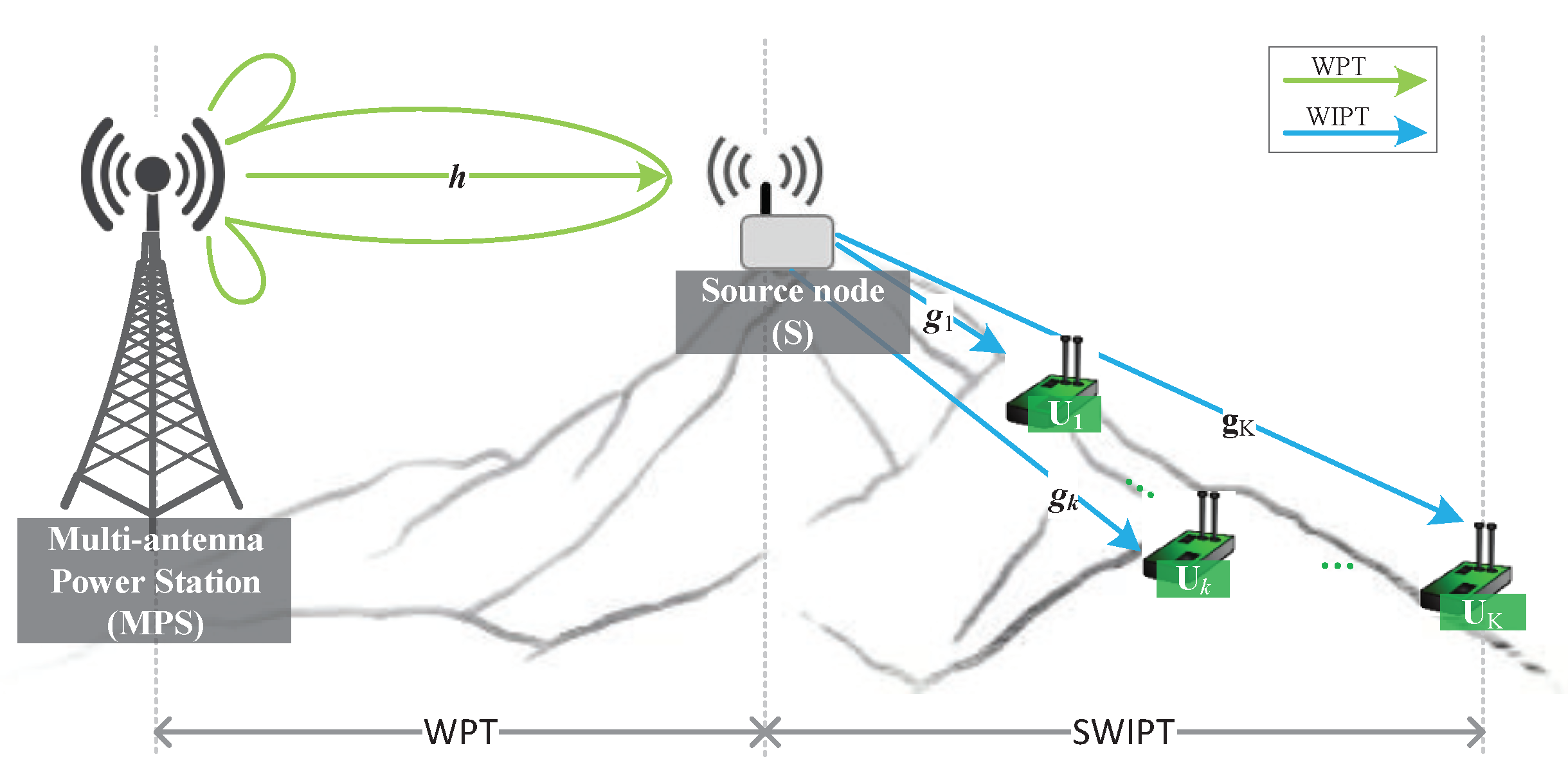
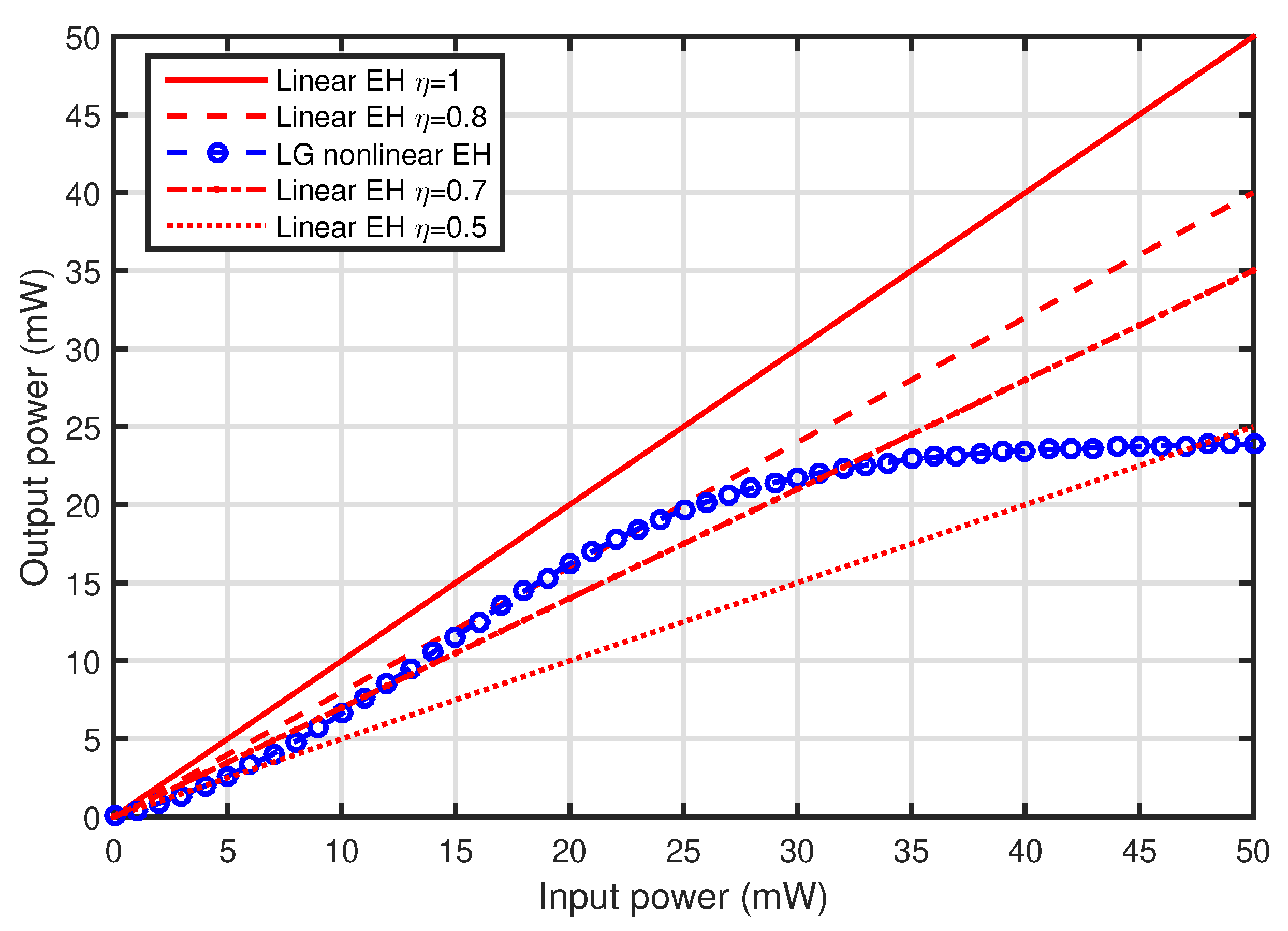

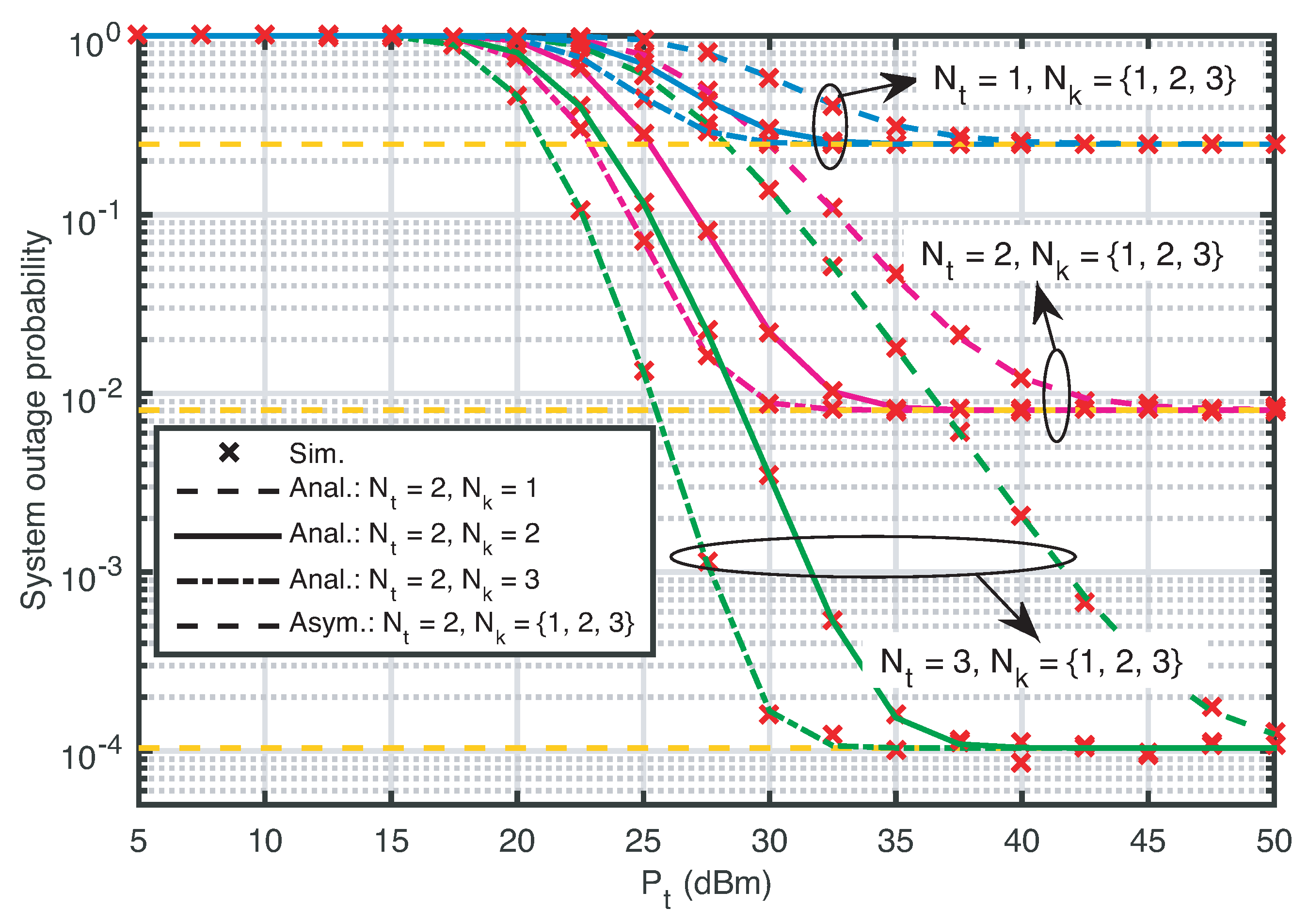
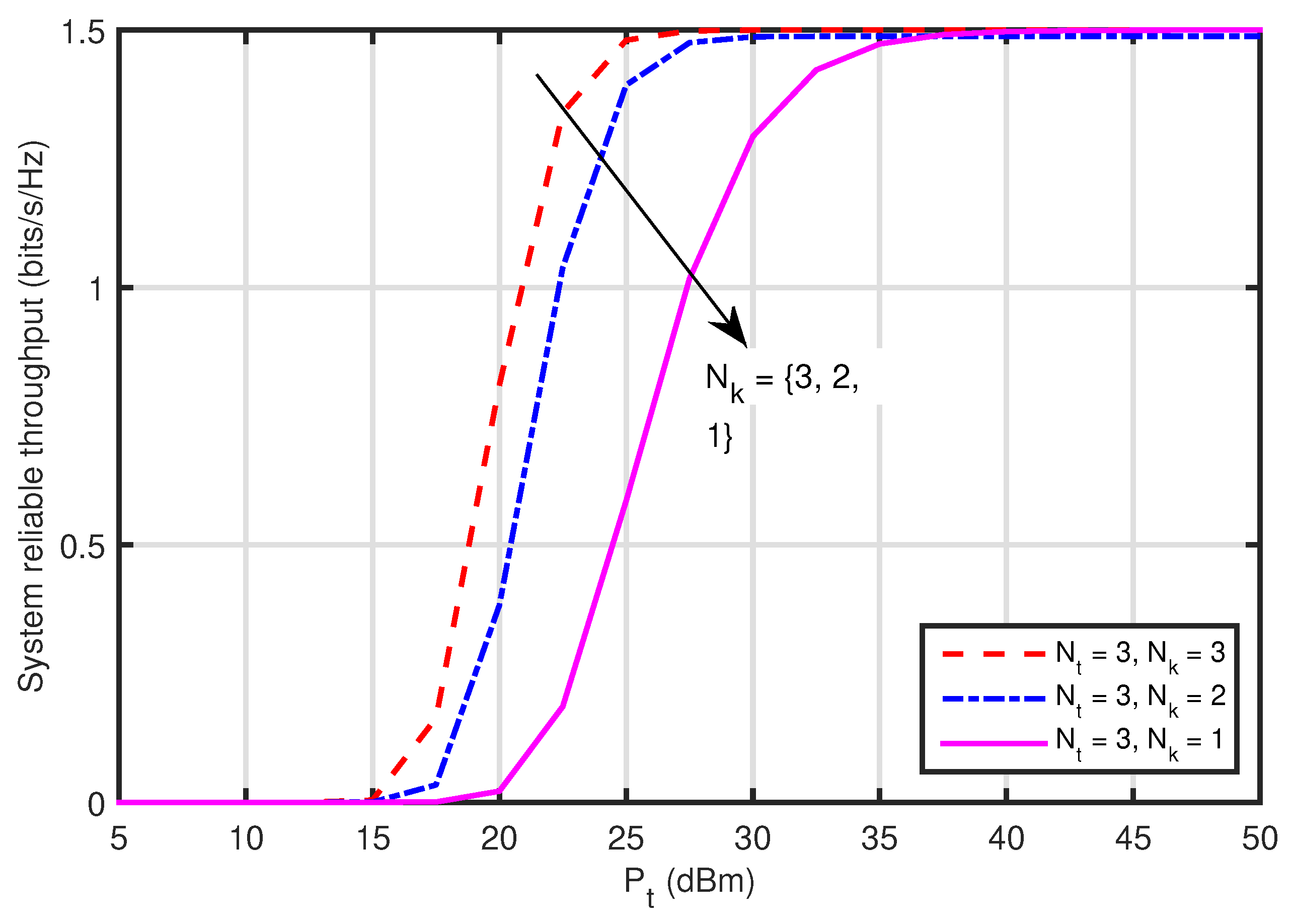
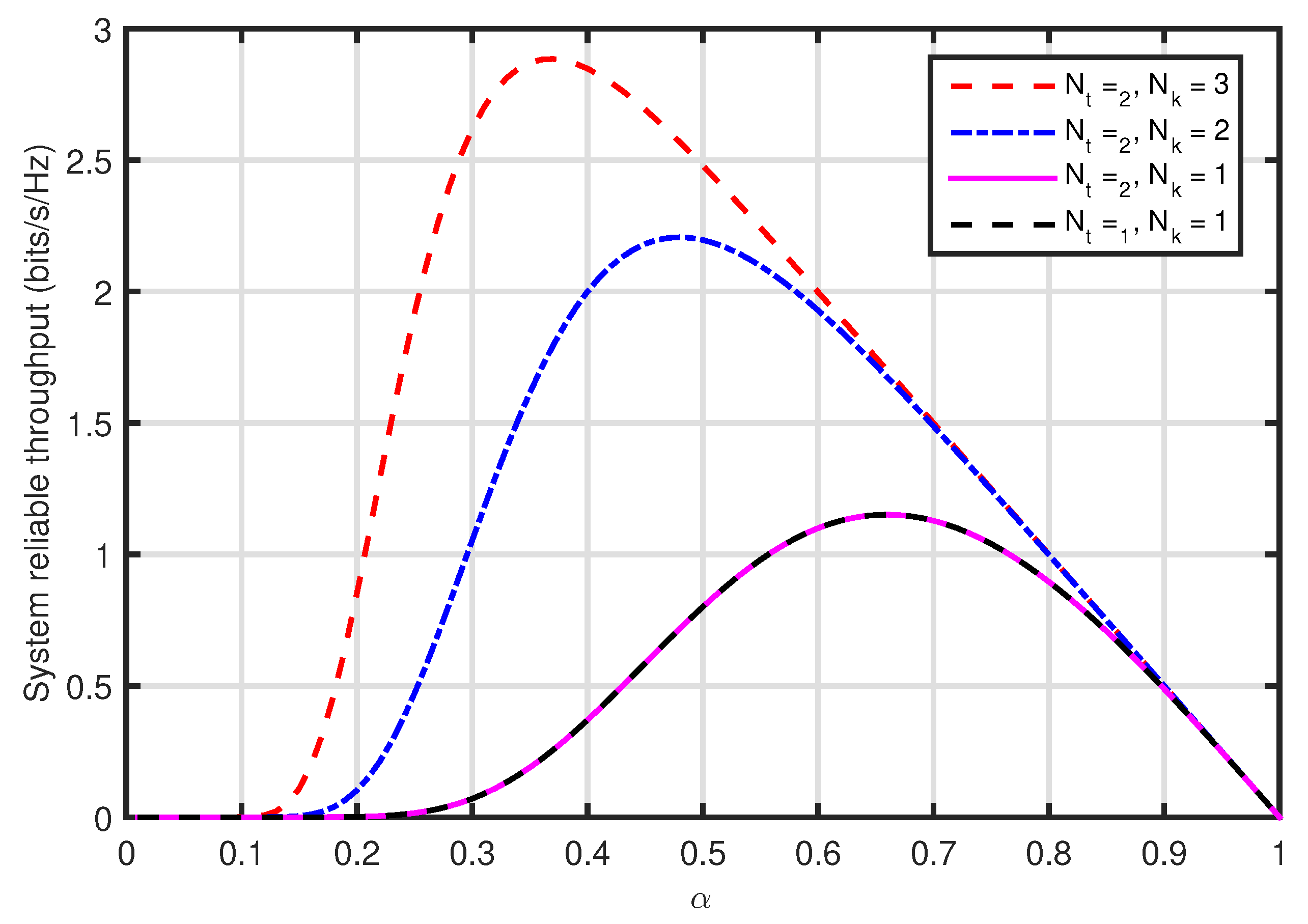
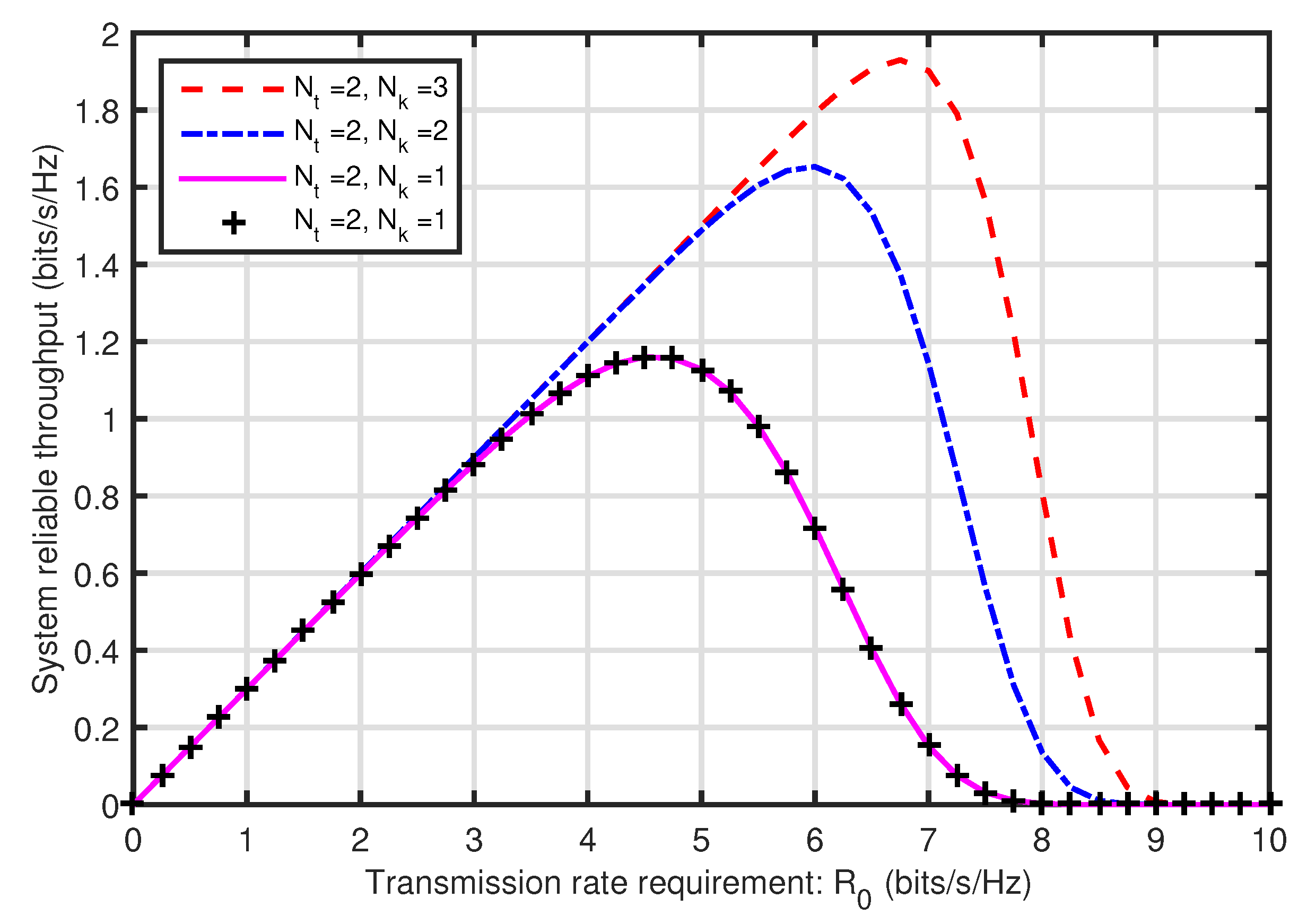
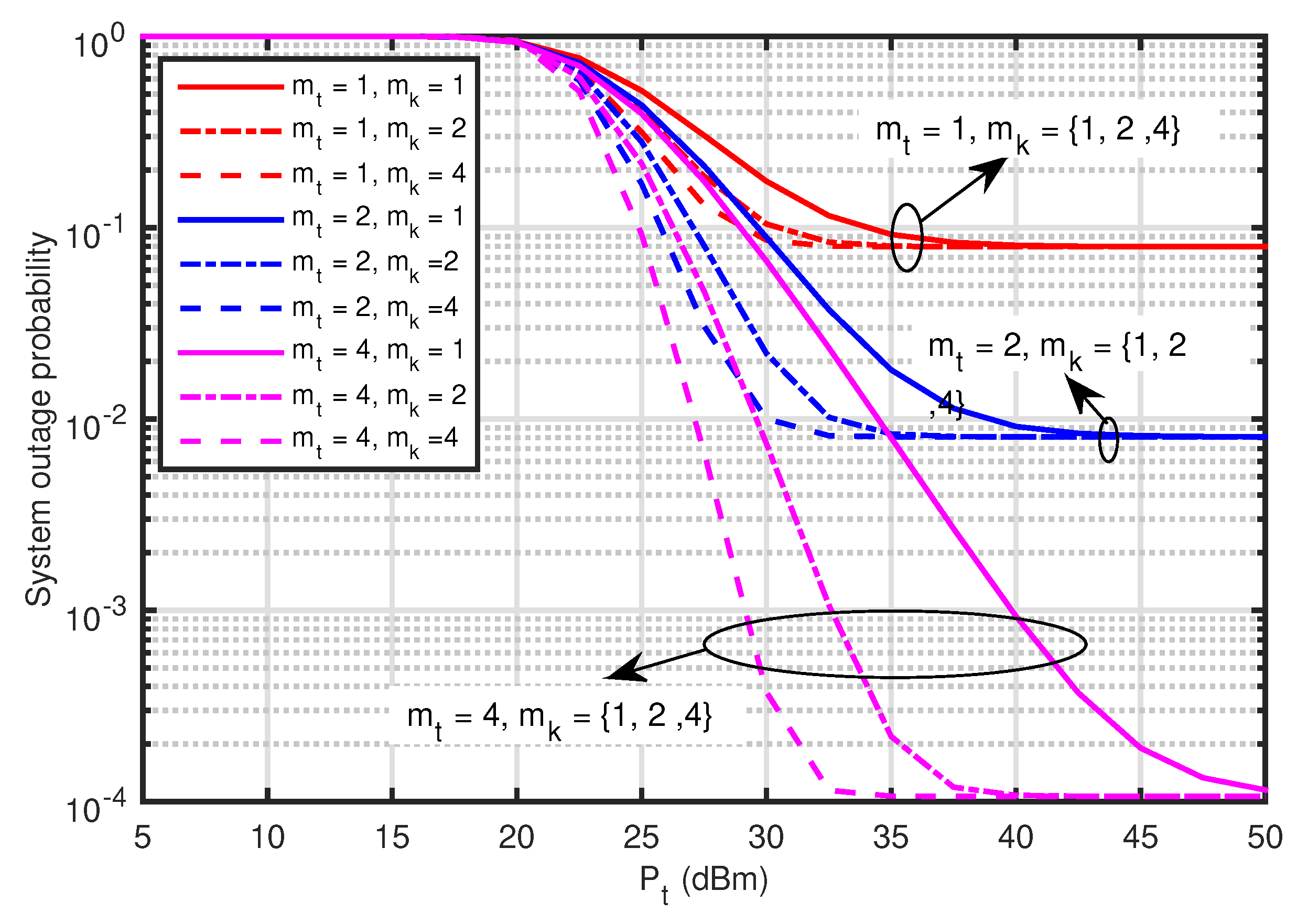
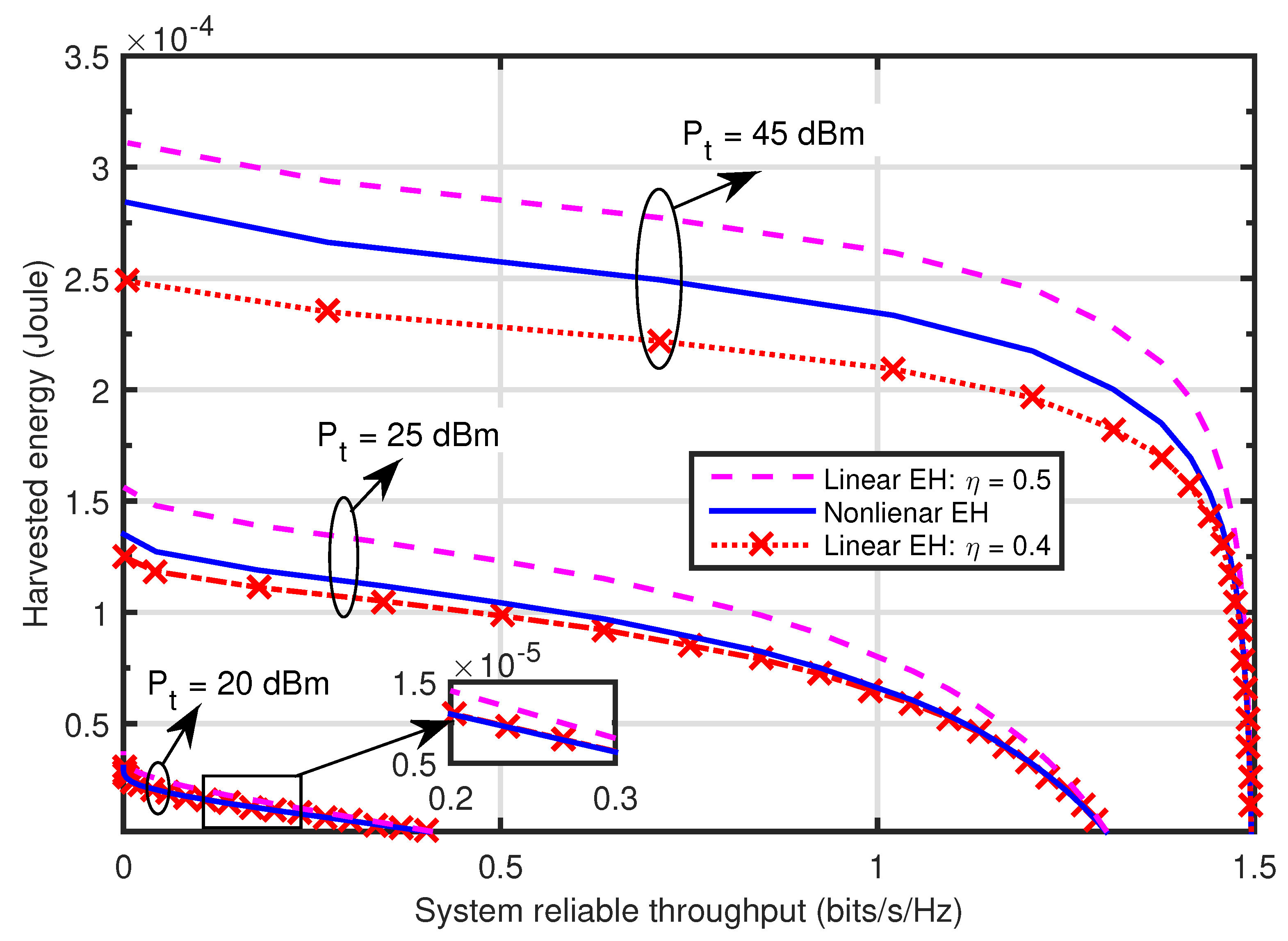
© 2019 by the authors. Licensee MDPI, Basel, Switzerland. This article is an open access article distributed under the terms and conditions of the Creative Commons Attribution (CC BY) license (http://creativecommons.org/licenses/by/4.0/).
Share and Cite
Jiang, R.; Xiong, K.; Zhang, Y.; Zhou, L.; Liu, T.; Zhong, Z. Outage and Throughput of WPCN-SWIPT Networks with Nonlinear EH Model in Nakagami-m Fading. Electronics 2019, 8, 138. https://doi.org/10.3390/electronics8020138
Jiang R, Xiong K, Zhang Y, Zhou L, Liu T, Zhong Z. Outage and Throughput of WPCN-SWIPT Networks with Nonlinear EH Model in Nakagami-m Fading. Electronics. 2019; 8(2):138. https://doi.org/10.3390/electronics8020138
Chicago/Turabian StyleJiang, Ruihong, Ke Xiong, Yu Zhang, Li Zhou, Tong Liu, and Zhangdui Zhong. 2019. "Outage and Throughput of WPCN-SWIPT Networks with Nonlinear EH Model in Nakagami-m Fading" Electronics 8, no. 2: 138. https://doi.org/10.3390/electronics8020138
APA StyleJiang, R., Xiong, K., Zhang, Y., Zhou, L., Liu, T., & Zhong, Z. (2019). Outage and Throughput of WPCN-SWIPT Networks with Nonlinear EH Model in Nakagami-m Fading. Electronics, 8(2), 138. https://doi.org/10.3390/electronics8020138





